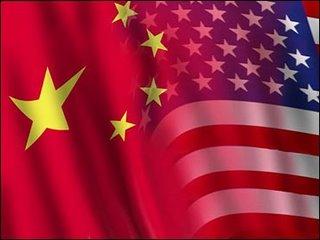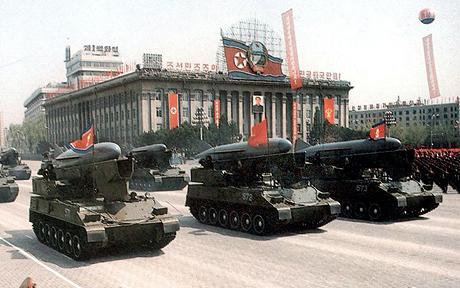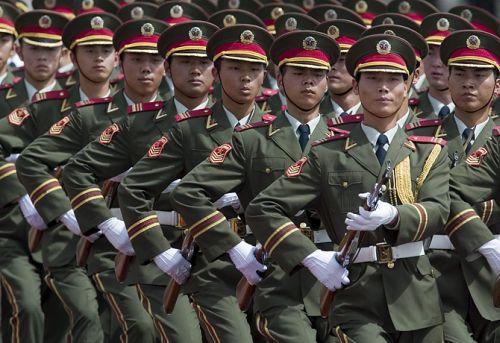United States presidents rarely visit the U.S. territory of Guam (or Guåhan in the Chamorro language), but President Obama may visit in June 2010. This will be a significant stop for residents of this small island, 30 miles long and eight miles wide, dubbed, “Where America’s day begins.” Guam is the southern-most island in the Northern Mariana chain that also includes Rota, Tinian, and Saipan. It is the homeland of indigenous Chamorro people whose ancestors first came to the islands nearly 4,000 years ago. Formed from two volcanoes, Guam’s rocky core now constitutes an “unsinkable aircraft carrier” for the United States military in the words of Brig. Gen. Douglas H. Owens, a former commanding officer of Guam’s Andersen Air Force Base.1

An Emerging Trend in East Asia: Military Budget Increases and Their Impact
The recent military budget increases in East Asia are motivated by various factors—flash point-driven, hedging strategy-driven, or governance-driven—but they do necessarily trigger an arms race in the region. Domestic politics within Japan, South Korea, China, and the United States have had a complicated impact on regional security. Furthermore, the potential crisis points on the Korean peninsula and in the Taiwan Strait are also driving factors that test the stability of the region. Despite competing interests and challenges, the U.S.-led system seems to be enduring and a great-power rivalry stemming from the increases in military spending between the United States and China appears unlikely.

China and America Jostle in Middle East
This century has witnessed China’s emergence as the main challenger to the superpower status of the United States. In a dramatic fashion, China is beginning to establish its foothold in the highly strategic, energy-rich region of the Middle East by forging strong ties with regional powers and gradually challenging the U.S.-Israeli regional dominance. Thanks to decades of double-digit economic growth and accelerating military modernization, China now has both the need for and the capability of engaging the Middle East.
Japan’s Military Spending at a Crossroads
Japan’s military budget has held steady at below one percent of its GDP. Japan spends heavily on personnel for its Self-Defense Forces, support of U.S. bases in Japan, and development of its ballistic missile defense and space development. Yet in recent times, the Japanese business community has also demanded an amendment to Article 9 of the constitution for the promotion of military-civil integrated space development and an end to the ban on arms exports. With the future of Japan’s security policy still uncertain after the election of the new Hatoyama administration, innovative disarmament cooperation would better serve the stability of the region than Japan’s development of high-tech, offensive military capabilities.
Averting Civil War in Thailand
As an individual concerned with events in Thailand, I am not sure if a plague-on-both-your-houses stance toward the Red Shirts (who support ousted prime minister Thaksin Shinawatra) and the Yellow Shirts (who oppose him) is enough.

Bucks for the Bang: North Korea’s Nuclear Program and Northeast Asian Military Spending
Delineating the impact of North Korea’s nuclear program on overall military spending among the other principal states of Northeast Asia is challenging. This article presents a foundation to address that challenge. After summarizing key elements of North Korea’s nuclear program, the article introduces frameworks to examine the security consequences of the program for the Northeast Asian region and assess North Korea’s motivations to pursue nuclear capabilities. The reviews indicate how these frameworks can be used to deduce hypotheses of more specific linkages of North Korea’s activities to other states’ military spending decisions, some strategically motivated and others more influenced by symbolism and domestic politics. The article concludes with observations on contemporary developments derived from the analysis.

An Arms Race for Northeast Asia?
The arms spending in Asia attracted media attention in the early 1990s in large part because it was seemingly anomalous. The rest of the world was scaling back or, at least, considering doing so. In Northeast Asia, between 1989 and 1994, both South Korea and China increased their military spending by double digits—19 percent—while Japan increased expenditures by a more modest 9 percent. The countries of Southeast Asia—Thailand, Indonesia, Malaysia, and Singapore—were on a spending spree. In contrast, Russia decreased spending during that period rather dramatically (because of the collapse of its economy). And the United States, a Pacific power tied to Northeast Asia through bilateral alliances, reduced spending by 21 percent.

China’s Military Spending: Soft Rise or Hard Threat?
Interpreting China’s military expenditure has been a complicated issue with important regional implications. This article will first look at the various estimates of China’s military budget and the discrepancies in the numbers as well as the geopolitical rationale driving Chinese military planning. Although China publishes its official defense budget and provides justifications for increases in its military spending, most observers remain skeptical of the accuracy of the official figures and wary of the military modernization efforts. This skepticism has shaped the responses of other Asia-Pacific nations toward China’s military modernization. Ultimately, even if the Chinese leadership views the military buildup as a natural part of the country’s ascension to great power status, the uncertainties surrounding its military expenditures actually undermine the contention that China’s rise will be peaceful.
Needed: A Coherent U.S. Strategy for India
Many foreign-policy analysts linked to the second Bush administration believe that the elevated and energized partnership with India he and his advisors brought about may be his greatest and most enduring legacy. The significant effort they put in to revitalizing the relationship undoubtedly deserves to be acknowledged for what it is, an important redefinition – but that failed to create the political, institutional framework necessary to sustain the considerable momentum generated by the civil nuclear cooperation deal. Moreover, the redefinition came about as a result of a “de-hyphenated policy,” that is to say a, delinking of India & Pakistan in U.S. foreign policy (i.e., building relations with India and relations with Pakistan rather than an India-Pakistan approach).
The Israeli Exception
North Korea and Israel have a lot in common.
Neither is a signatory to the Nuclear Non-Proliferation Treaty (NPT), and both employ their nuclear weapons in elaborate games of peek-a-boo with the international community. Israel and North Korea are equally paranoid about outsiders conspiring to destroy their states, and this paranoia isn’t without some justification. Partly as a result of these suspicions, both countries engage in reckless and destabilizing foreign policies. In recent years, Israel has launched preemptive strikes and invaded other countries, while North Korea has abducted foreign citizens and blown up South Korean targets (including, possibly, a South Korean ship in late March in the Yellow Sea).
